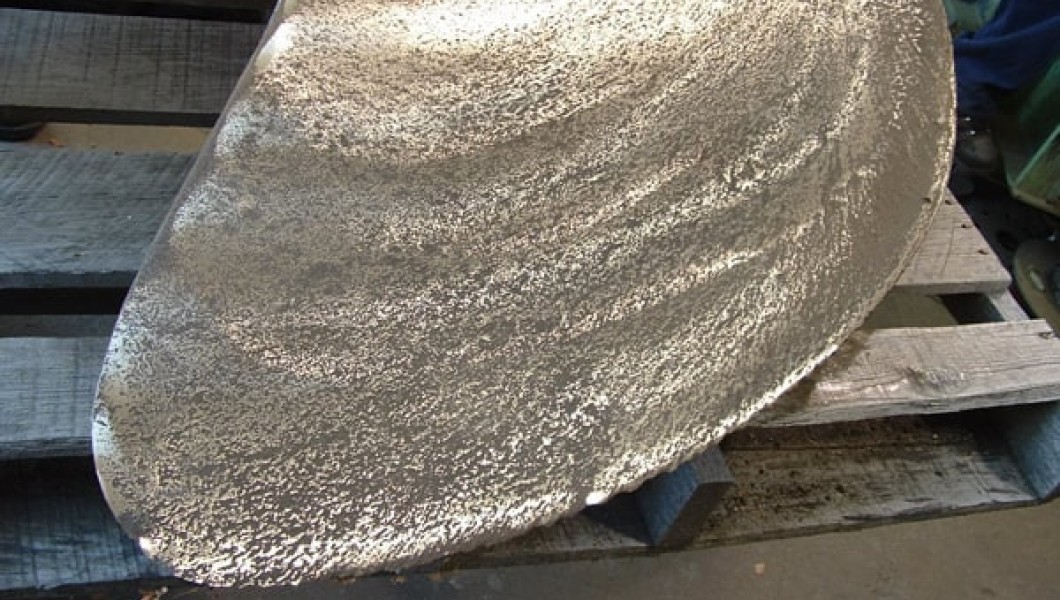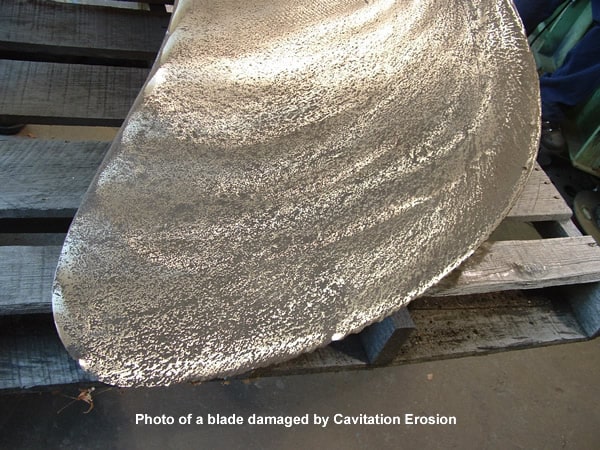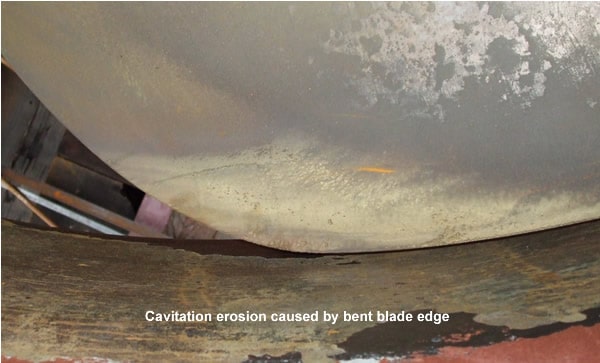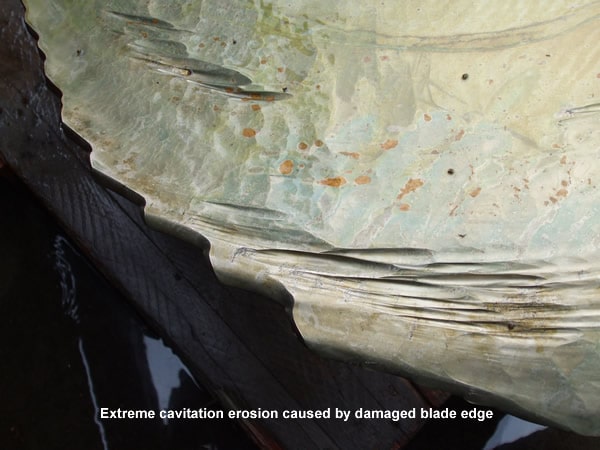
Cavitation Erosion
Marine propellers operate in a hostile environment. They are subject to impact damage from floating debris and submerged objects. They are also subject to galvanic corrosion, and cavitation erosion.
Each of these can be a problem which left unattended can result in the demise of the propeller. Most marine propellers operate with a certain amount of cavitation, and in most cases there are no adverse results. However, when the cavitation levels are too high, it can result in substantial erosion of the blade and hub surfaces. To understand where this erosion comes from, we have to take a look at cavitation and what causes it.
So What is Cavitation?
From Wikipedia the free encyclopedia
Cavitation is the formation of vapour cavities in a liquid - i.e. small liquid-free zones ("bubbles" or "voids") - that are the consequence of forces acting upon the liquid. It usually occurs when a liquid is subjected to rapid changes of pressure that causes the formation of cavities where the pressure is relatively low. When subjected to higher pressure, the voids implode and can generate an intense shock wave.
Inertial cavitation is the process where a void or bubble in a liquid rapidly collapses, producing a shock wave. Inertial cavitation occurs in nature in the strikes of mantis shrimps and pistol shrimps, as well as in the vascular tissues of plants. In man made objects, it can occur in control valves, pumps, propellers, and impellers.
Cavitation is a significant cause of wear in some engineering contexts. Collapsing voids that implode near to a metal surface cause cyclic stress through repeated implosion. This results in surface fatigue of the metal causing a type of wear called "Cavitation Erosion". The most common examples of this kind of wear are to pump impellers, and bends where a sudden change in the direction of liquid occurs. Cavitation is usually divided into two classes of behavior: inertial (or transient) cavitation and non-inertial cavitation.Non-inertial cavitation is the process in which a bubble in a fluid is forced to oscillate in size or shape due to some form of energy input, such as an acoustic field. Such cavitation is often employed in ultrasonic cleaning baths and can be observed in pumps, propellers, etc.
Since the shock wave formed by the collapse of the voids are strong enough to cause significant damage to moving parts, cavitation is usually an undesirable phenomenon. It is very often specifically avoided in the design of machines such as turbines or propellers, and eliminating cavitation is a major field int he study of fluid dynamics. However, it is sometimes useful and does not cause damage when the bubbles collapse away from machinery, such as super-cavitation.
So What Causes Propeller Cavitation?
Like
I stated earlier, most marine propellers operate with a certain amount
of cavitation. It is only when the level of cavitation reaches above the
maximum acceptable level that we begin to see the impact of the
excessive cavitation in the form of erosion on the blade and hub surfaces.
Knowing this, designers go to great lengths using very complex
mathematical formulas to calculate the maximum allowable cavitation
levels. The propeller is designed to fit the entire propulsion system
and the vessel in an effort to reduce or eliminate excessive cavitation.
In some cases there is no solution for the propeller design, and a
complete redesign of the propulsion system and even the vessel can be
involved.
Luckily all of this is usually worked out early in the
design stage of most vessels, from small pleasure boats to large
container ships.
For practical purposes, there are a number of seemingly insignificant things to watch out for. These are common problem we see that can cause cavitation erosion damage to begin, where it wasn't before.
- All it takes is a small bend, or ding on a propeller blade edge to
set up the conditions that result in cavitation erosion. The little bend
on the blade edge that seems relatively insignificant, changes the flow
of the water around the propeller blade. The pressure change created at
the bend will generate higher levels of cavitation, which given enough
time will develop into erosion. Once the erosion begins, the rough
surface will further generate more cavitation, so the process can grow
into a bigger problem the longer it is left uncorrected.

- Another cause would be accidentally altering the edge profile of a propeller blade during cleaning. This happens quite often on smaller propellers during a haul-out to clean the bottom of the vessel. Either the owner or a worker at the boat yard gets a little over zealous with the grinder around the propeller blades.
- Aside from blade damage, there are other things that can set up cavitation erosion. For instance increasing the engine horsepower during a re-power can create greater pressure on the propeller blades. Unless care is taken to calculate a suitable increase in blade surface area to match the increase in power, cavitation levels will increase.
- A gear ratio change that results in higher shaft speeds can cause the propeller blade tip speed to increase to the point that cavitation occurs a the blade tips.
- Operating a vessel in a way it was not designed for, such as towing something heavy with a runabout can create excessive cavitation.
- It normally takes a fair bit of time for cavitation to begin the erosion process, so a propeller that is operating with high cavitation levels part of the time may not develop noticeable erosion.
- If the propeller material has galvanic corrosion, or
the material has been compromised in some way, it would be easily
eroded by small amounts of cavitation.


1 Comment(s)
Thanks to Steve for the last bottom photo.
We work on catastrophic subglacial water. We find all sort of cavitation marks sculpted by water under last Ice age ice sheet. Check
2 of our videos on Geodoxa Youtube channel
1- Cavitation Island...
2- Hydraulic Shock...
We would love to use your last photo on our website. We clearly see what we call "nested spindle flute".
Also how to give credit...?
Guy, a Canadian geologist engineer
Leave a Comment